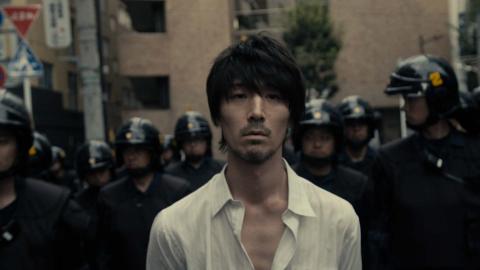Meiro Koizumi
APT9
Born 1976 Gunma, Japan
Lives and works in Yokohama, Japan
Working predominantly in video, Meiro Koizumi blends striking formal experimentation with acute social commentary, often directed at the rise of ultra-nationalism in Japan, along with memories and representations of the Pacific War. Koizumi initially created performance videos in which he was the primary actor; subsequently he extended this to work with other actors, and sometimes audience members, creating situations in which he would play a role of interference, probing or aggravation. His videos often focus on everyday scenarios, performances or situations, which suddenly build in tension and risk breaking out of control. From interviews with former Kamikaze pilots to emotive evocations of extreme political antagonism, Koizumi uses the medium of video to reveal the fragility of the human psyche, and to draw his viewers into the complex relationships between the individual and power.

In the three-screen video installation Rite for a dream – Today my empire sings 2016, Meiro Koizumi dramatises a vivid dream from his childhood,staged at an anti-emperor demonstration in Tokyo. The Hantenren anti-emperor rally is a controversial republican demonstration held annually on 15 August, the anniversary of Japan’s surrender at the end of the Pacific War in 1945. The 2016 rally was especially contentious, with the current Emperor Akihito having just expressed his desire to abdicate. Anti-emperor marchers were vehemently opposed by ultra-nationalists, and the two groups were separated by thousands of armoured police.
Despite the volatile atmosphere, Koizumi chose not to feature the marchers, and instead focused on the actor/protagonists he inserted into the event: a blindfolded chamber orchestra and choir who intone a hymn, and the central character — a handcuffed man pushed along by riot police, who is subject to the harsh speech of nationalist counter-protesters. The central character is drawn from a childhood nightmare — in which, during a food shortage, Koizumi’s father is taken away to be turned into animal feed.
In this work, Koizumi touches on the aesthetics of Christianity, a minority religion in Japan. The artist’s father is Christian, and the work has echoes of the stories of other father figures, such as Jesus Christ and the Emperor, who are sacrificed to maintain a higher order. Building to a tense climax, the work is a complex exploration of the psychology of social systems, touching on sensitive issues in Japanese society.

